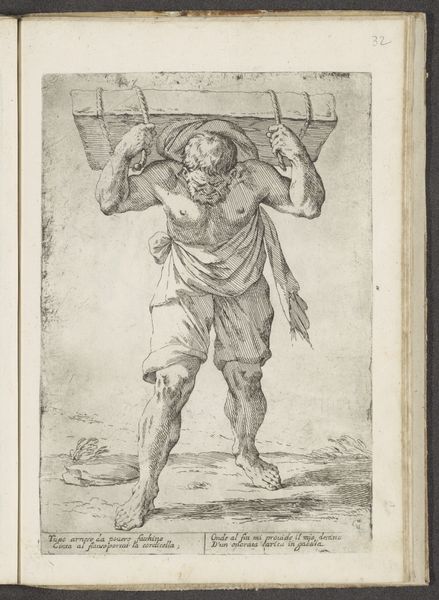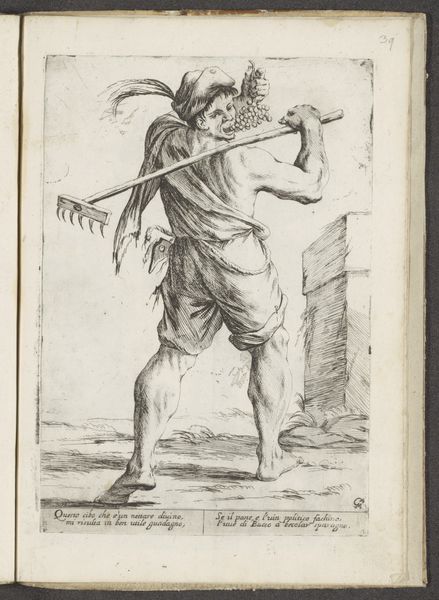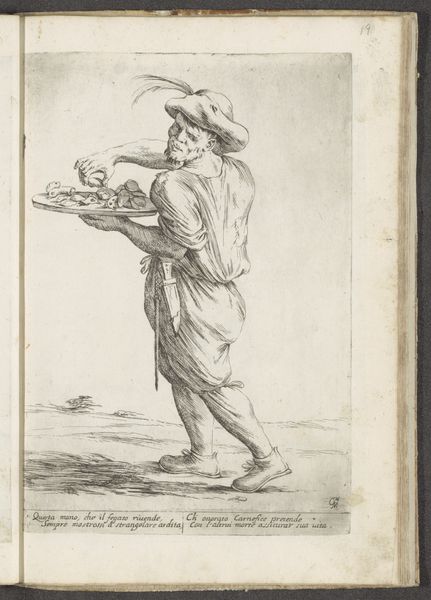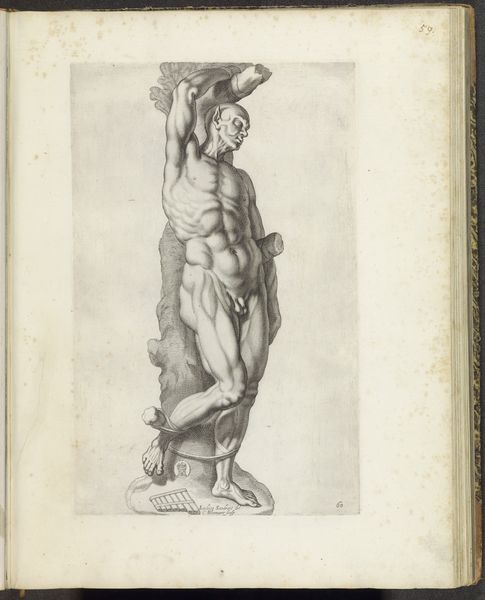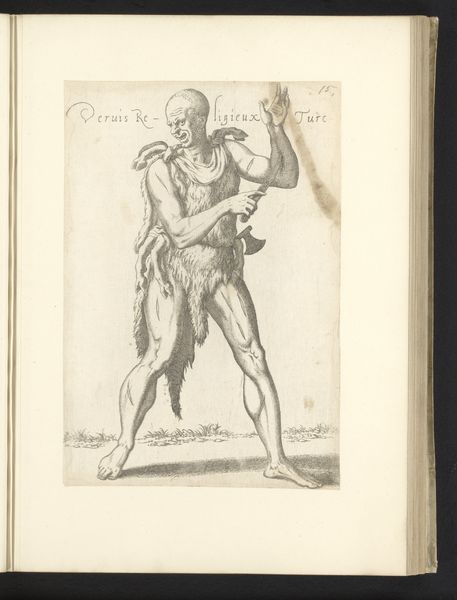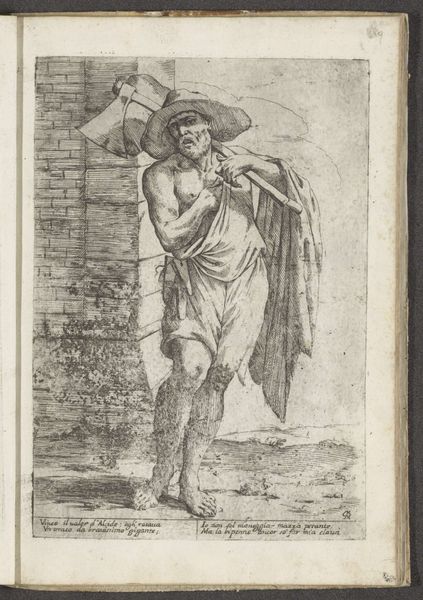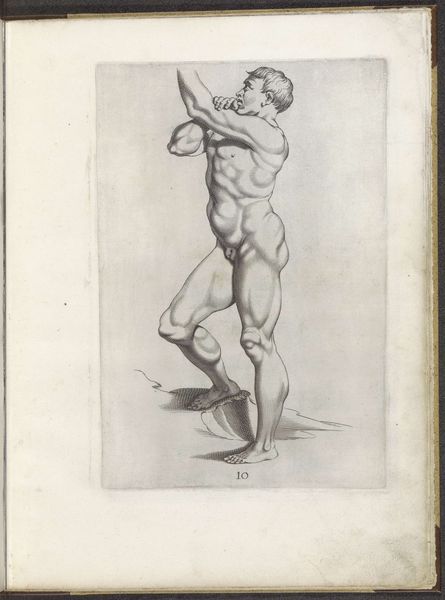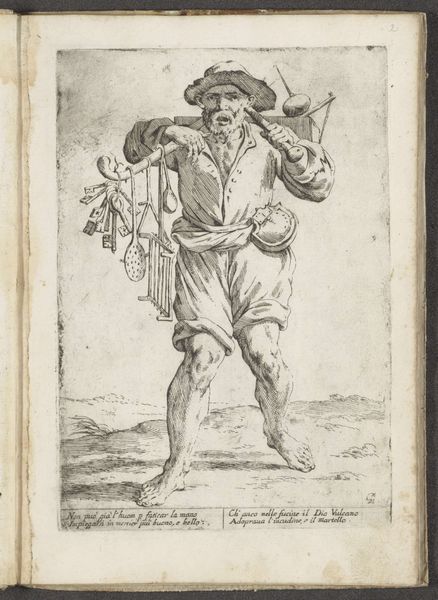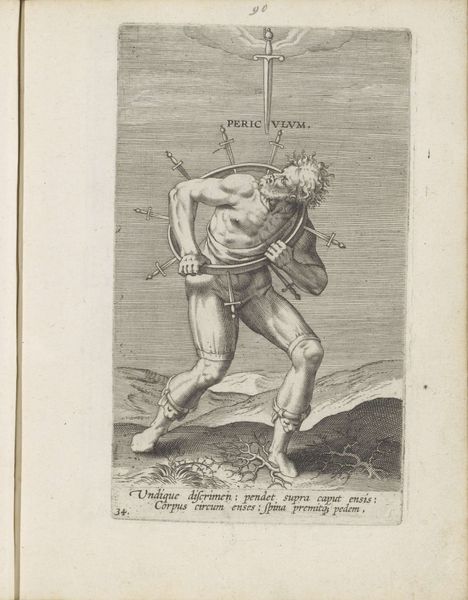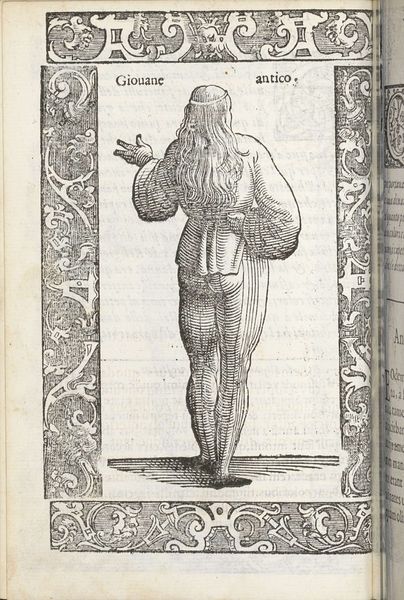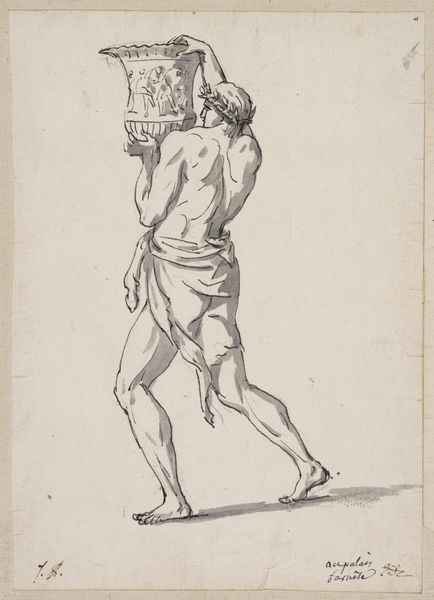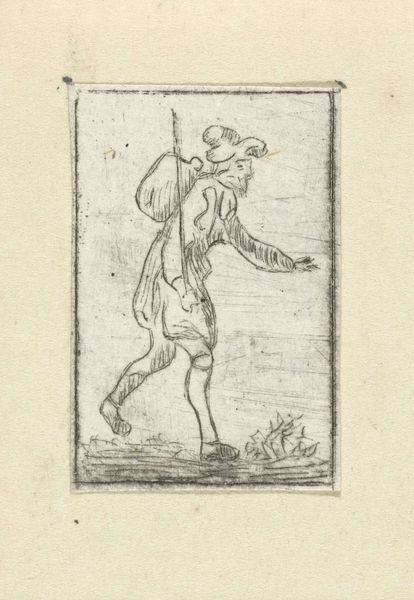
print, etching
#
narrative-art
#
baroque
# print
#
etching
#
figuration
#
pen-ink sketch
#
pen work
#
genre-painting
Dimensions: height 280 mm, width 191 mm
Copyright: Rijks Museum: Open Domain
Editor: This etching, "Man met geslacht varken" or "Man with slaughtered pig," by Giuseppe Maria Mitelli, made around 1660 and housed at the Rijksmuseum, presents a stark image. There's something unsettling, almost tragic, about the weight the man carries and how it fills the composition. What symbols or narratives might be embedded in such a direct, yet potentially symbolic, depiction? Curator: Indeed. The slaughtered pig is potent. On one level, it's a simple genre scene reflecting the daily life of 17th-century Europe—a common food source, labor. Yet, zoom out. Consider what the pig has symbolized across cultures, from plenty and prosperity to uncleanliness and vice. Think of its role in religious sacrifice, ancient fertility rites. The artist is almost certainly drawing from the emotional and cultural well of imagery around death, burden, and even the human condition itself. Does the posture of the man—slightly stooped, facing forward—evoke any other symbolic associations for you? Editor: He almost seems resigned. Perhaps this relates to representations of labor? Is he strong or defeated? Curator: Precisely! He embodies both. Strength in bearing the load, resignation perhaps in its inevitability. The etching technique also reinforces the stark realism. Mitelli uses a network of fine lines to construct volume, light, and shadow. These delicate strokes contribute to the emotionally charged atmosphere. What message is there for us as contemporary viewers? Editor: Perhaps the cycle of life and death, the reliance on animals for survival, things that still hold cultural relevance, despite this being a glimpse from centuries ago. It also feels poignant knowing such scenes disappear from common spaces. Curator: Excellent points! We begin with the visual depiction of everyday life, but it unfolds to broader societal memories and symbolic traditions. By layering time, you gain additional perspectives on meaning. This act helps activate the cultural conversation the piece ignites through art history. Editor: I see it so differently now. Thanks!
Comments
No comments
Be the first to comment and join the conversation on the ultimate creative platform.
